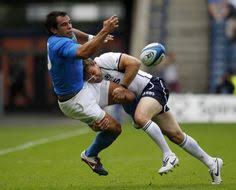Providing Encouragement as a S&C Coach
- Shahbaz Hasan
- Apr 12, 2018
- 6 min read
Updated: May 12, 2018

Imagine this scenario, you walk into a typical strength and conditioning session with a team of athletes and numerous coaches. What would you expect the coaches to be doing aside from technical cueing? Most likely they are going to be providing some sort of encouragement in the way of phrases like “FASTER”, “EASY WEIGHT”, “YOU’VE GOT THIS,” but have we ever thought a bit deeper on what these phrases are trying to achieve, are they even useful? What phrases elicit better results from athletes? What tends to happen, is that these phrases are given before or during efforts and then feedback is provided after. If feedback and instruction are specific to both the task and athlete, then surely the encouragement phrases should be too? This article will look at the outcomes we are looking to achieve from these encouragement practices and provide some recommendations, in what type of methods may be used within sessions to improve performances.
A good place to start might be to understand what we are trying to achieve from these phrases and how they can help the athlete. In looking at encouragement, there are mainly two aspects that the coach is trying to impact, either the amount of effort put forth to achieve the task objective, or the athlete’s perception, in that they believe they have the ability to achieve the task goals. There is some support for these suggestions, if we look at the scientific evidence for skill acquisition, it is clear that high mental and physical efforts are required to achieve and master skills (Ives & Shelley, 2003). Furthermore, if we look at constraint based theories of skill acquisition, the assertion is that we will move based on what we have the ability to do and our perception on what we have the ability to do (Davids, Button, & Bennett, 2008). Anecdotally, If you were to walk into a training environment and simply observe, it is clear that the phrases will fall into one of these two categories.
High efforts could be seen to be important for any given training scenario. To achieve adaptations, it is clear that high efforts are required, especially if one considers the principle of overload (Zatsiorsky & Kraemer, 2006). A given stimulus is likely to be outside of an athlete’s current capabilities, therefore effort is essential for adaptation. From a long term view, developing athletes to allow high consistent efforts is in my opinion an imperative for both higher level competition as well as a general quality that will be useful in later careers.
Although effort could be thought of as a general behaviour, the way effort is applied will be specific to a given task. The difference between a high speed running task and a heavy lifting task both require high efforts, however the way effort is expressed is vastly different. As such the coach will need to emphasise words that encourage high forces, velocities, accelerations, displacements and so forth dependent on the task. As an example during a bench press the athlete could be encouraged to ‘bend the bar’ which likely will result in higher muscle activation and potentially higher forces (Wulf, McNevin, Fuchs, Ritter, & Toole, 2000). Not only can phrases be used but constraints within the environment can be changed to alter effort levels. As an example, competitive races could be prescribed by the coach to alter effort levels within high speed running tasks.
A final point on effort, is to consider when this aspect of coaching is most beneficial and how it may fit into the wider plan. While effort is required for each session, there are times when these will be of greater importance. With novice athletes, effort levels should be encouraged to facilitate the right behaviours early in a career, allowing potentially greater long term development, as well as these high efforts allowing greater adaptations. With new skills, athletes need to put forth high mental efforts to allow acquisition and mastery of a skill (Ives & Shelley, 2003). There also may be times within the training year where high efforts need to be prioritised, especially in team sport athletes, where during pre-season periods a high volume of training will occur. This would be an ideal time to encourage high efforts with the methods suggested earlier.
In summary, effort is an important aspect in the training of athletes. In encouraging high efforts, the coach should consider what aspect of a particular task is most important, so that they may provide relevant phrases or constraints, as well as considering when high efforts are most relevant.
Confidence appears to be highly complex, as potentially this aspect is not easily observed and requires creative approaches from the coach to impact. The belief in ones own ability appears to be highly influential in what someone is able to achieve and as such appears to be critical in high sports performance (Spindler, Allen, Vella, & Swann, 2017). The scientific evidence does lend support to this with our belief systems influencing the way we act, move and perform (Mallek, Benguigui, Dicks, & Thouvarecq, 2017). Suppressive mechanisms exist for actions we believe are harmful or outside of our capabilities (Mason et al., 2017).
While effort is considered a general behaviour, confidence is highly specific to the individual with different environmental and social cues impacting athletes differently (Giles-Corti & Donovan, 2002). As such, an ability to impact an athlete’s confidence requires a deep understanding of the individual by the coach. A favourable change in perception would mean that the task appears easier in difficulty than the athlete originally thought. Specific phrases would essentially focus on reinforcing the athletes capabilities in achieving the task. Examples could include ‘repeat this rep same as the last one’, ‘You can do this’, ‘You’ve done this weight before’. While these may appear useful for some athletes, in most cases the phrases would have to be highly specific to the athlete which can infer a successful completion of the task. A further strategy using phrases, may be to use deception where a specific expression of confidence is given to the athlete even if the coach believes this may be outside the athlete’s ability. An ethical consideration would need to be resolved in this case. What may appear more meaningful in providing perceptual changes, is to use regressive tasks with similar constraints to reinforce the athlete’s confidence e.g. a maximal tuck jump before a box jump, a snatch high pull before a snatch etc. Which reinforces the athletes ability by a direct recent experience.
The occasions where promoting confidence is going to be of greater use, is within tasks where the athlete has not completed the prescribed level of difficulty or complexity before e.g. a 1RM back squat attempt, maximal sprint speed over 30m or an open skill agility drill. As such, encouraging confidence is going to be of more importance in experienced athletes as they achieve higher levels of skill and preparedness. Furthermore, this is likely to be of greatest importance, in skills which are well versed and during seasonal periods where testing is taking place or the athlete is trying to better previous performances.
Two final points to consider, is that although there has been no mention of the technical aspects of movement this should not be ignored, rather the training of athletes should be considered from a broad perspective, which entails the development of behaviours that are important in sporting performance. While confidence and effort have been discussed to be wholly different attributes, relevant at differing times, with differing athletes, this should be considered conceptually. The actuality of training scenarios will be that there is likely levels of effort and confidence required in each session and it is up to the coach to decide what is most relevant, considering the individual athletes, period of the training year and the objective of a session.
In summary, effort and confidence should be considered as two important behavioural aspects of high sporting performance. Coaches should consider how these aspects can be encouraged with the use of phrases or constraints for both effort and confidence. A consideration should be given to the task to understand what constitutes as effort, with constraints or phrases being planned accordingly. Similarly, with confidence levels a consideration of the individual athlete and how their perception can be changed through specific phrases, deceptive phrases or constraints should be made. Finally, these behavioural aspects can be maximised at certain points within a season and within an athlete’s career, however should be considered in light of the wider context of coaching an athlete.
Davids, K., Button, C., & Bennett, S. (2008). Dynamics of skill acquisition. Human Kinetics.
Giles-Corti, B., & Donovan, R. J. (2002). The relative influence of individual, social and physical environment determinants of physical activity. Social Science & Medicine (1982), 54(12), 1793–1812.
Ives, J. C., & Shelley, G. A. (2003). Psychophysics in Functional Strength and Power Training: Review and Implementation Framework. [Review]. Journal of Strength, 17(1), 177–186.
Mallek, M., Benguigui, N., Dicks, M., & Thouvarecq, R. (2017). Sport expertise in perception–action coupling revealed in a visuomotor tracking task. European Journal of Sport Science, 17(10), 1270–1278. https://doi.org/10.1080/17461391.2017.1375014
Mason, J., Frazer, A., Horvath, D. M., Pearce, A. J., Avela, J., Howatson, G., & Kidgell, D. (2017). Adaptations in corticospinal excitability and inhibition are not spatially confined to the agonist muscle following strength training. European Journal of Applied Physiology, 117(7), 1359–1371. https://doi.org/10.1007/s00421-017-3624-y
Spindler, D. J., Allen, M. S., Vella, S. A., & Swann, C. (2017). Manipulating implicit beliefs about decision-making ability affects decision-making performance under submaximal physiological load. Sport, Exercise, and Performance Psychology, 6(2), 179–187. https://doi.org/10.1037/spy0000088
Wulf, G., McNevin, N. H., Fuchs, T., Ritter, F., & Toole, T. (2000). Attentional Focus in Complex Skill Learning. Research Quarterly for Exercise and Sport, 71(3), 229–239. https://doi.org/10.1080/02701367.2000.10608903
Zatsiorsky, V. M., & Kraemer, W. J. (2006). Science and practice of strength training. Human Kinetics.






Comments